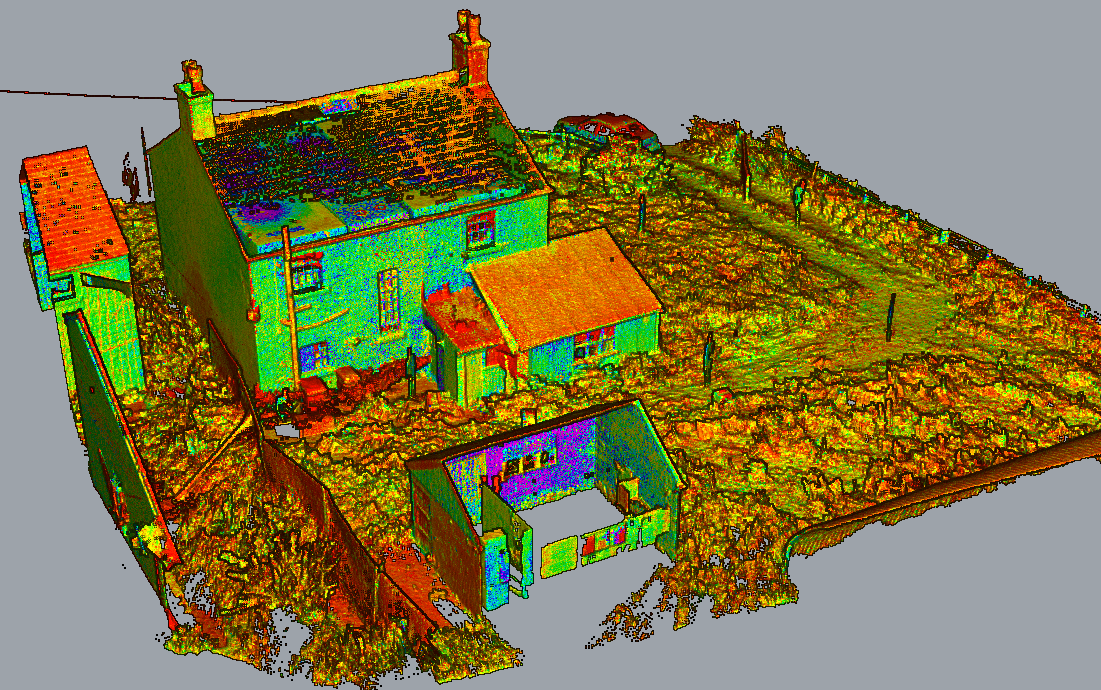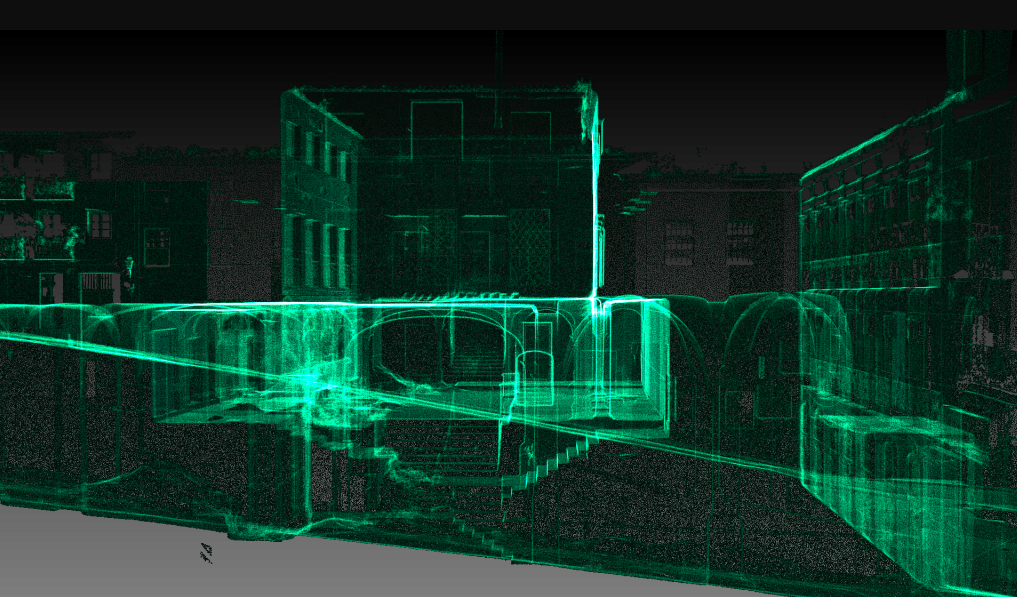How 3D Laser Scanning Transforms Architectural Layout and Construction Projects
3D laser scanning is transforming the landscape of architectural style and construction. This modern technology provides unmatched accuracy in catching existing atmospheres, which assists in better task preparation and implementation. It reduces mistakes while improving performance in different stages of advancement. The effects for collaboration amongst engineers, engineers, and other stakeholders are considerable. These innovations open the door to new design opportunities and cutting-edge remedies. What exists ahead for this developing modern technology?
The Fundamentals of 3D Laser Scanning Technology
Although 3D laser scanning innovation might appear complex, its core principles are simple and transformative for architectural style. This modern technology employs laser beams to capture exact dimensions of physical structures, creating a comprehensive factor cloud that stands for the scanned atmosphere. A laser scanner sends out quick pulses of light, determining the moment it considers the light to return, which allows for the estimation of ranges with amazing accuracy.
The resulting point cloud can be converted right into a 3D model, supplying architects with invaluable visual data. This design enables experts to control and evaluate style elements within their tasks, enabling ingenious remedies and improved visualization. By employing 3D laser scanning, designers can better comprehend the existing problems of a website, making sure that brand-new layouts balance with their environments. This assimilation of innovation into architectural layout notes a considerable advancement, promoting creative thinking and accuracy in the field.

Enhancing Accuracy and Effectiveness in Architectural Projects
As building tasks increasingly require precision and rate, 3D laser scanning arises as an essential device in enhancing both precision and performance. This innovation records millions of data factors in a quick timeframe, developing thorough and exact 3D designs of existing frameworks. The ability to acquire accurate dimensions minimizes the threat of mistakes throughout the style stage, enabling designers to visualize their projects with unparalleled clearness.
The quick information collection procedure minimizes the time invested on-site, enabling teams to concentrate on evaluation and layout improvements. With real-time data schedule, changes can be made quickly, promoting a more structured process. The integration of 3D laser scanning right into architectural techniques not only boosts dimension accuracy however additionally boosts the general project timeline, facilitating quicker decision-making. In a sector where precision is important, this technology stands as a transformative force, raising the standards of architectural design and construction jobs.
Streamlining Collaboration Amongst Stakeholders
While standard architectural processes frequently entail fragmented communication amongst stakeholders, 3D laser scanning promotes an extra cohesive collective setting. By giving precise, high-resolution information, this modern technology permits engineers, specialists, clients, and engineers to operate from a unified factor of referral. The in-depth visualizations generated through laser scanning remove ambiguities and misinterpretations, ensuring that all celebrations have accessibility to the very same information.
This transparency improves decision-making and motivates timely comments, as stakeholders can quickly imagine layout aspects and spatial relationships. In enhancement, the integration of 3D scanning data into Building Information Modeling (BIM) systems additionally enhances collaboration, permitting real-time updates and alterations. Such seamless interaction not just reduces disputes however also speeds up job timelines, as all stakeholders continue to be straightened throughout the layout and building phases. Eventually, 3D laser scanning changes conventional process into a much more collective and effective process, profiting all celebrations included.
Opening Creative Possibilities in Layout
By allowing architects to visualize complex complex details and spatial relationships, 3D laser scanning discloses innovative opportunities in design. This modern technology enables precise mapping of existing atmospheres, allowing engineers to discover innovative principles that could have formerly her latest blog appeared not practical. With extremely accurate information, designers can try out unconventional kinds and materials, pressing the limits of standard architecture.
The assimilation of 3D laser scanning right into the layout procedure cultivates collaboration amongst multidisciplinary groups, encouraging the exchange of ideas and boosting imagination. The in-depth visualizations generated by this technology not just help in determining potential layout obstacles yet also motivate services that may not have actually been thought about. Consequently, engineers can produce a lot more dynamic and appealing spaces that reverberate with users while fulfilling practical demands. Eventually, 3D laser scanning transforms the building landscape, encouraging developers to realize their visions with unmatched precision and imagination.
The Future of 3D Laser Scanning in Architecture and Construction
The assimilation of 3D laser scanning into architectural style not just boosts imagination but likewise sets the phase for its developing role in the future of architecture and building. As technology advances, the precision and performance of laser scanning will proceed to improve, enabling architects and builders to produce more complicated styles with accuracy - 3D Scanning. Using this innovation in real-time information collection will certainly facilitate far better decision-making, decreasing errors and simplifying workflows
Future applications might include online and increased reality integrations, enabling stakeholders to picture jobs in immersive settings. In enhancement, as sustainability comes to be a concern, 3D laser scanning will support the advancement of energy-efficient designs by offering detailed insights right into existing frameworks. As cooperation among various techniques ends up being more essential, the capability to Discover More Here share exact 3D designs will cultivate technology and enhance task end results. Ultimately, 3D laser scanning will certainly redefine criteria in architectural style and building and construction practices.
Often Asked Concerns
What Is the Price of Carrying Out 3D Laser Scanning Innovation?

Just how Lengthy Does a Typical 3D Laser Scanning Project Take?
A typical 3D laser scanning project can take anywhere from a few hours to numerous days, depending on factors such as the job's size, complexity, and the level of information required for accurate information capture.
What Kinds Of Projects Advantage Most From 3D Laser Scanning?
3D laser scanning benefits various jobs, especially massive constructions, historic restorations, and complex renovations. It boosts precision in dimensions, lowers mistakes, and offers detailed data necessary for reliable preparation and execution in building style and building.

Exist Details Software Program Programs Required for 3D Laser Scans?
Yes, details software application are essential for processing 3D laser scans. 3D Scanning. Popular choices consist of Autodesk Wrap-up, Faro Scene, and Leica Cyclone, each offering special attributes customized for analyzing and envisioning checked data successfully in different tasks
How Does 3D Laser Scanning Impact Environmental Sustainability in Building?
3D laser scanning improves ecological sustainability in construction by minimizing material waste, allowing specific dimensions, and promoting see post reliable resource use. This technology enables far better preparation, minimizing the ecological impact of construction projects via enhanced accuracy and performance.
3D laser scanning is changing the landscape of architectural design and construction. 3D laser scanning innovation might appear complex, its core concepts are straightforward and transformative for architectural layout. By making it possible for architects to envision complicated elaborate information and spatial relationships, 3D laser scanning reveals innovative possibilities in design. The combination of 3D laser scanning into the design process promotes partnership among multidisciplinary teams, encouraging the exchange of concepts and boosting imagination. The integration of 3D laser scanning right into building design not only improves creativity but likewise establishes the phase for its developing role in the future of style and building and construction.